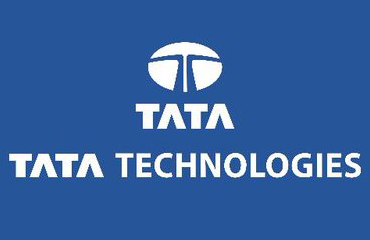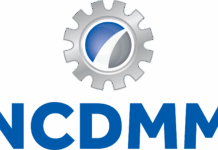Exploring the integrated PLM-ERP-MES holistic landscape
The number one challenge of manufacturing is getting the right product, at the right time, at the right price. Competitive advantage used to come from automation and more recently digitalization, but this has now become the norm with the advent of new technologies and modern apps. Enterprise Resource Planning (ERP) and Manufacturing Execution Systems (MES) are essential but not sufficient to make manufacturing organizations competitive; they are basically “must-have” solutions to automate the relevant hygiene processes so that the business and its factories are run more effectively and efficiently.
Prior to reaching the shop floor, products are designed and engineered in the product development and engineering departments. The product creation lifecycle is managed  from the advanced product concept to start of production, using Product Lifecycle Management (PLM) apps to design, engineer, simulate, virtually build and assemble them digitally before they even reach the shop floor.
from the advanced product concept to start of production, using Product Lifecycle Management (PLM) apps to design, engineer, simulate, virtually build and assemble them digitally before they even reach the shop floor.
The enterprise data flows within and across the PLM-ERP-MES trinity at once, with different levels of integration, at different phases of the product lifecycle, against multiple data models and structures. The core principles between this integration concern Master Data Management (MDM), product and enterprise data alignment across the product lifecycle, and collaboration across the extended enterprise.
Broadly speaking, PLM knows “what” (technical decisions), ERP knows “why” (strategic decisions), while MES knows “how to” (operational decisions).
It is however difficult to define or assess the right level of integration as on one hand not enough of it can create business gaps and redundancies, while too much integration can compromise the native purpose and capabilities of these three platforms or ecosystems. For example, this links to one of the key MDM questions: who owns the manufacturing Bills of Material (MBoM)?
PLM is about “WHAT”
PLM provides the upstream platform for product creation and engineering data management. At the concept phase, product creation processes allow for flexibility and creativity with limited or no change management, with the ability to reuse data from past products. As products mature, the data management process becomes tighter, change management kicks-in, and more organizational functions are required to collaborate to make things happen. PLM addresses the following questions (non-exhaustive list):
- What attributes will define the new product introduction?
- What technologies will be identified and selected to define the product design?
- What engineering metrics will define and validate the product and/or platform?
- What PLM data will be fed to ERP and how will it be used downstream?
- What technical decisions are made at the PLM level and what are the implications upstream?
Data traceability in PLM relates to the ability to reuse data, to manage historical information and new ideas. Some of it is released into new products, while most data will not be passed to manufacturing or the wider enterprise.
As PLM feeds data downstream to the ERP engine, product and business information combine while data is restructured to allow the extended enterprise to operate and collaborate above and beyond the engineering teams. At this stage, various departments and functions interact across the enterprise, controlling and managing supply chain data, customer data, financial data, procurement data, HR data, planning data, multiple metrics and KPIs.
ERP is about “WHY”
ERP regroups the core business data backbone where strategy and operations converge. The ERP data model cannot follow the PLM data structure because it is not meant to manage such levels of creativity and product prototypes. The ERP data must be structured so that it feeds the downstream functions (manufacturing, supply chain, sales and marketing, etc.) in a transactional manner.
Data traceability in ERP relates to planning, strategic alignment, operations, compliance, upstream and downstream coordination. Due to its transactional nature, ERP data has a clear status and alignment within the relevant business processes. In a nutshell, ERP addresses the following questions (non-exhaustive list):
- Why does the organization exist and what is its product strategy?
- How does the business plan to achieve long-term sustainable growth?
- Why (and what) engineering data cascades from PLM into ERP to feed the business engine and what is relevant to top floor decision making?
- How does the strategy translate into operations across all business functions?
- What strategic (and business-related operational) decisions are made at the ERP level and what are the implications upstream and downstream?
- How can the business prevent incidents, protect its workforce and ensure products meet standards?
ERP data is fed back upstream to PLM to allow for integrated change management processes, including supplier and cost data, material and compliance data, as well as product and platform configuration data.
ERP data is fed downstream to MES to provide reference product information, production demand, master schedules, master data, BoMs, Standard Operating Procedures, change orders, inventories, planned resources, target performance metrics, etc.
MES is about “HOW TO”
MES is the de facto shop floor performance and operations management engine behind most mass-production control activities. It regroups all plant-wide manufacturing decisions, focusing on rapid actions, detailed planning, forecasting, continuous improvement, planned and actual metric analysis and ongoing adjustments.
Data traceability in MES relates to live operations, performance, upstream feedback on results and required input (materials, resources, etc.). By default, MES is the most transactional system of the manufacturing organization, with the highest level of reactiveness needed to anticipate, align and adjust production and business parameters. MES addresses the following questions (non-exhaustive list):
- How to optimize technology for the organization to become more efficient.
- How can the organization effectively manage risks and safeguard performance issues?
- How to implement and achieve operational excellence objectives on the shop floor?
- How to combine planning, execution and control information into a continuous feedback loop to align and optimize production and business operations?
MES feeds data back upstream to ERP with order status, resource usage (labor, equipment, materials), as-built genealogy yields, time events, etc.
PLM-ERP-MES: Pan-Enterprise Digital Integration
Most of the ERP data fed to MES contains evolutions or restructured PLM data. Also, PLM systems allow for production, shop floor and logistics simulation, and digital and virtual optimization. Hence the need for the MES-ERP feedback loop to extend further upstream to PLM for closed-loop validation and ongoing earning. This relates to Design for Manufacturing and Assembly (DFMA) principles.
PLM, ERP and MES are coming together to create a foundation for a modern-day interpretation of lean manufacturing.
As part of the product-to-production platform, there are direct connections from PLM to the shop floor, such as work instructions, routing information, and vice et versa from the shop floor to PLM with non-conformance results. The PLM-MES direct link has the potential to deliver agility through shop floor execution excellence.
Downstream PLM-MES interfaces include BoM and Bills of Process (BoP), components, process lists, work instructions, engineering change orders, work certifications, resource types, control resources, etc.
Upstream MES-PLM interfaces include closed-loop product and process data, change requests with mark-up, updated work instructions, selected and evaluated KPIs, non-conformance failure modes, etc.
PLM-MES integration allows for continuous response to shifting demands by distributing the latest product designs and assembly methods to a more connected, efficient, and effective production value chain. There are three important questions to address while looking at the integrated PLM-ERP-MES holistic landscape:
There are three important questions to address while looking at the integrated PLM-ERP-MES holistic landscape:
- What MES data needs to be integrated back upstream to ERP and PLM?
- How much is to be fed upstream from MES to PLM via ERP vs directly from MES to PLM?
- What level of data and process visibility is required in the ERP platform and how to maintain a ‘certain level of agility’ and consistency across each PLM-ERP-MES layer?
This again relates to key MDM considerations and assumptions when integrating the three platforms.
Finally, collaboration is the new norm and is not enabling competitive advantage anymore. Being able to collaborate is now a basic matter of survival (mandatory but not sufficient to compete). The level of integration and how lean the organization can be, constitutes one of the new paradigms to enable competitive advantage. For example, too much integration can damage the ability of the organization to operate swiftly and/or compromise the purpose of the enterprise platforms (PLM-ERP-MES); alternatively, not enough integration might hinder its ability to execute and optimize.
About Tata Technologies:
Tata Technologies makes product development dreams a reality by designing, engineering and validating the products of tomorrow for the world’s leading manufacturers. With more than 8,500 employees serving clients worldwide, Tata Technologies is the manufacturing industry’s premier partner for advanced engineering, research and development, product lifecycle management consultancy and software, and connected enterprise IT solutions.
For more information please visit www.tatatechnologies.com










































